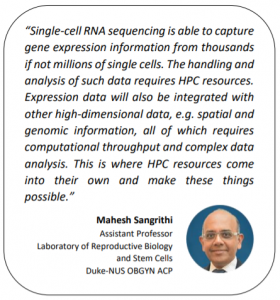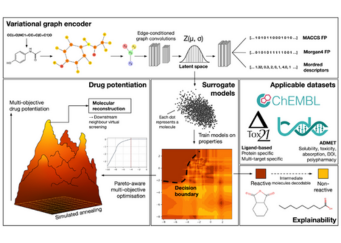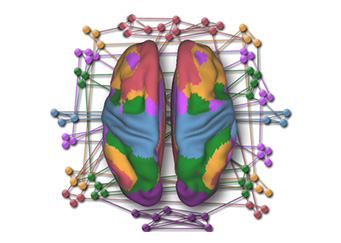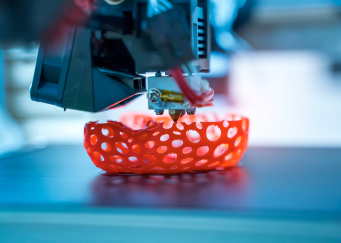A team from Duke-NUS Medical School is using supercomputers to aid in the building of a molecular ‘atlas’ for sperm generation to better understand human male infertility and develop potential new therapies.
Fertility problems are on the rise globally, potentially affecting 1 in 6 couples with nearly half of them having an underlying male factor. To understand this, a team of researchers at the Laboratory of Reproductive Biology and Stem Cells at Duke-NUS OBGYN ACP have created a molecular ‘atlas’ for sperm generation using high-throughput single-cell gene expression profiling technology. The team uses single-cell sequencing techniques to generate multiple types of data such as scRNASeq and scATAC-Seq using testis tissue samples from different species like monkeys, humans and mice to understand the developmental trajectory of spermatogenesis.

As the data produced from these experiments are high-dimensional and require high-throughput computational power to process and analyse, the team is tapping onto NSCC’s supercomputing resources to aid them in their handling and analysis of such data. For example, one single-cell experiment can generate a few hundred million reads from 20 – 50 thousand cells, which requires computational time ranging from 10hrs to a few days depending on the data and the scaling up of memory requirements as data sizes increase.
Findings from the research will yield greater insight into the transcriptional and epigenetic landscape of germ cells and somatic cells in the testis of infants, juveniles and adults and will help characterise the cell types and identify gene expression and epigenetic markers for each cell type. This research will add new knowledge to the understanding of human male infertility, and will contribute towards the development of improved tests or potential therapies. The findings of this study have been published in the journal, Developmental Cell.
To find out more about the NSCC’s HPC resources and how you can tap on them, please contact [email protected].
NSCC NewsBytes February 2021
Other Case Studies
Advancing Drug Discovery Research using NSCC HPC resources
Researchers from Nanyang Technological University (NTU) are applying variational graph encoders as an effective generalist algorithm in computer-aided drug design (CADD)....
Gaining Deeper Insights into Mental Disorders through Brain Imaging and High-Performance Computing
Researchers from NUS are leveraging supercomputing to develop better strategies for prevention and treatment to mitigate the impact of mental illness. The human brain is a marvel...
Using Digital Twin Technology to Optimise the Industrial 3D Printing Process
Researchers from the Institute of High-Performance Computing (IHPC) are utilizing supercomputers to create a digital twin that furnishes users with comprehensive information...


